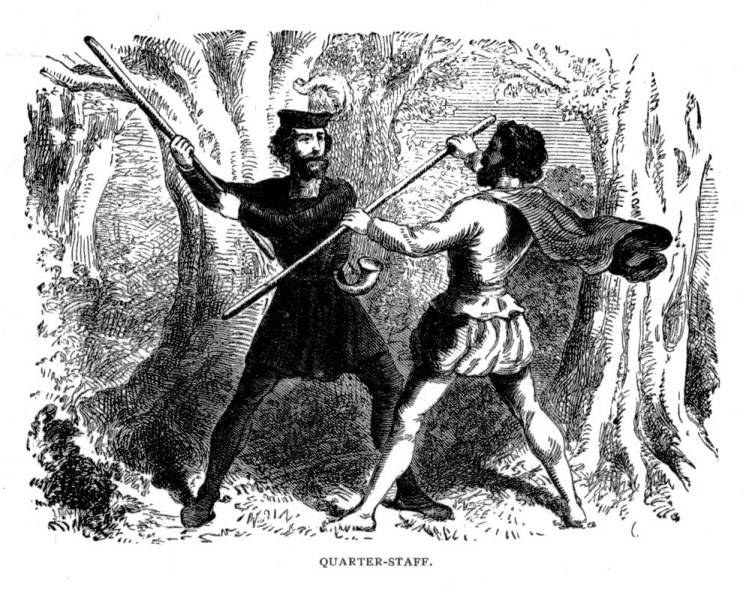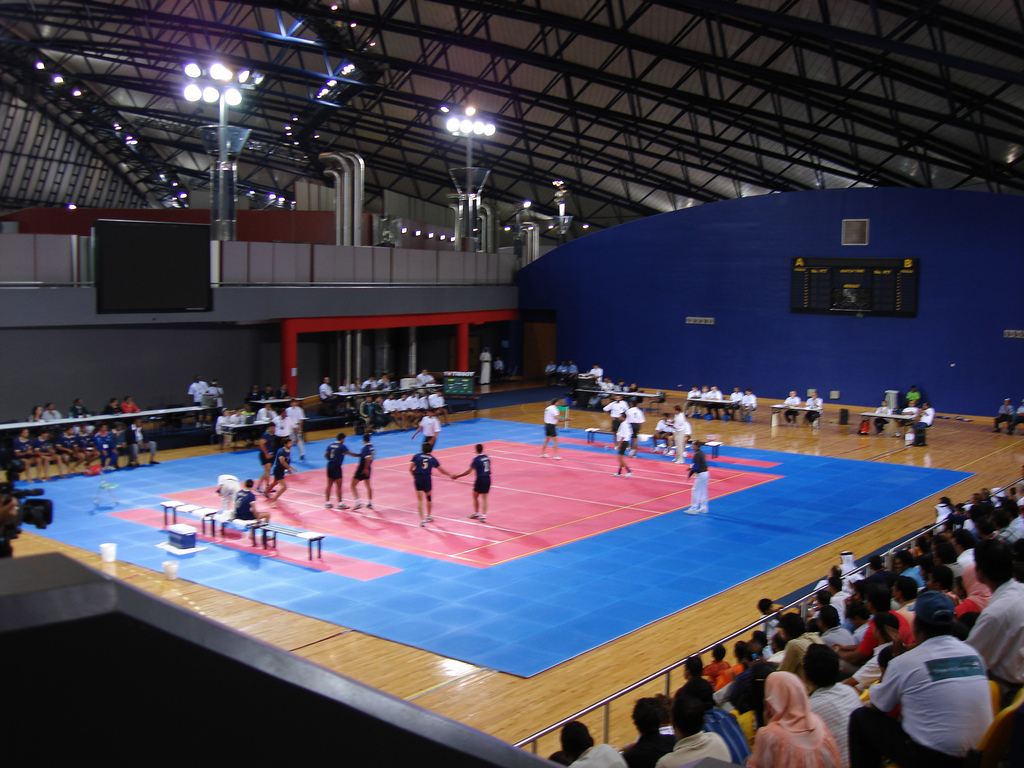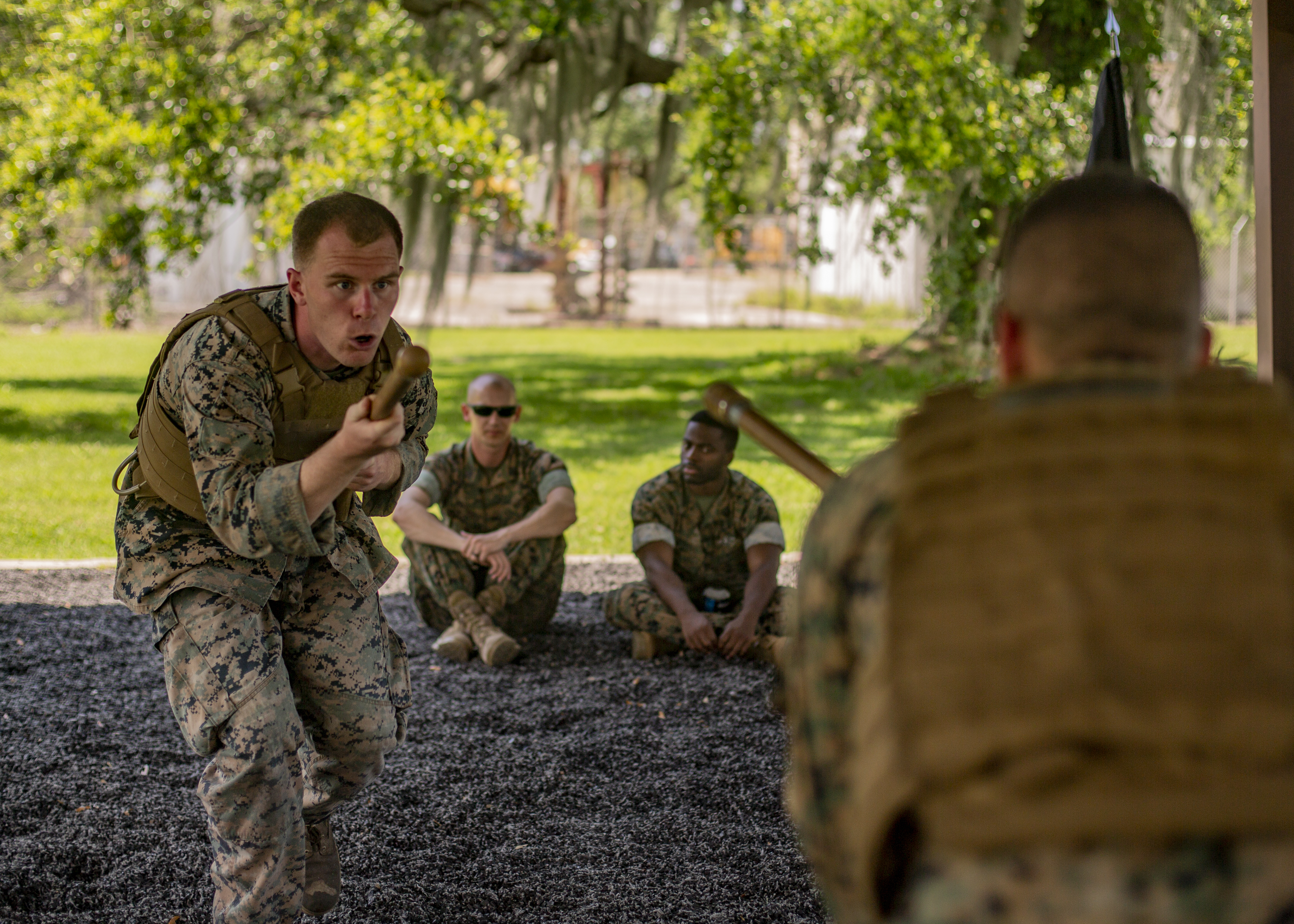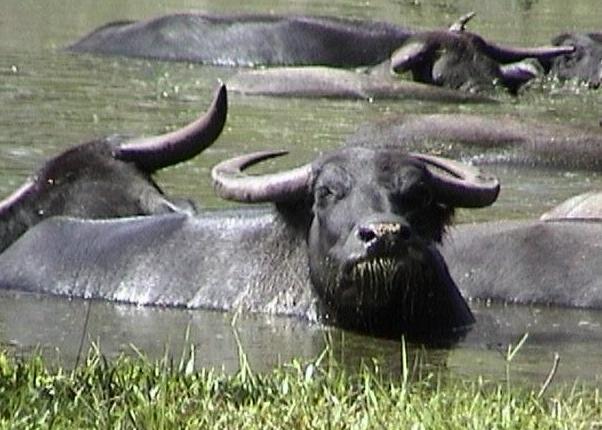|
Lathi Khela
Lathi khela () is a traditional Bengali martial art – a kind of stick fighting practiced in Bangladesh. A practitioner is known as a ''lathial''. Lathi khela originated from the Bengal region in Indian subcontinent. Etymology The word '' lathi'' is the Bengali word meaning stick, while ''khela'' means a sport or game. Therefore, ''lathi khela'' translates as a game of sticks. Instruments The lathi is normally made of the male bamboo and sometimes bound at short intervals with iron rings. A typical lathi measures 6 to 8 feet (2 to 2.4 m). Some, called bari, are shorter and may be wielded like a baton or bludgeon. In the past, sticks could be paired with shields, as can still be seen in ''nori bari'' (mock stick-fight) demonstrations. History Rich farmers and other eminent people hired ''lathial'' for security and as a symbol of their power. Duels were used as a way to protect or take land and other possessions. A proverb in some South Asian languages is "whoever wields the ... [...More Info...] [...Related Items...] OR: [Wikipedia] [Google] [Baidu] |
Stick Fighting
Stick-fighting, stickfighting, or stick fighting, is a variety of martial arts which use blunt, hand-held "sticks" for fighting, most typically a simple, non-lethal, wooden staff or baton. Schools of stick-fighting exist for a variety of weapons, including gun staffs, bō, jō, bastons, and arnis sticks, among others. Cane-fighting is the use of walking sticks as improvised weapons. Some techniques can also be used with a sturdy umbrella or even with a sword or dagger still in its scabbard. Thicker and/or heavier blunt weapons such as clubs or the mace are outside the scope of stick-fighting (since they cannot be wielded with the necessary precision, relying on the sheer force of impact for stopping power instead), as are more distinctly-shaped weapons such as the '' taiaha'' used by the Māori people of New Zealand, and the '' macuahuitl'' used by the Aztec people of Mesoamerica in warfare. Although many systems are defensive combat techniques intended for use if attack ... [...More Info...] [...Related Items...] OR: [Wikipedia] [Google] [Baidu] |
Zamindar
A zamindar in the Indian subcontinent was an autonomous or semi-autonomous feudal lord of a ''zamindari'' (feudal estate). The term itself came into use during the Mughal Empire, when Persian was the official language; ''zamindar'' is the Persian for ''landowner''. During the British Raj, the British began using it as a local synonym for "estate". Zamindars as a class were equivalent to lords and barons; in some cases, they were independent sovereign princes. Similarly, their holdings were typically hereditary and came with the right to collect taxes on behalf of imperial courts or for military purposes. During the Mughal Empire, as well as the British rule, zamindars were the land-owning nobility of the Indian subcontinent and formed the ruling class. Emperor Akbar granted them mansabs and their ancestral domains were treated as jagirs. Most of the big zamindars belonged to the Hindu high-caste, usually Brahmin, Rajput, Bhumihar, or Kayastha. During the colonial era, ... [...More Info...] [...Related Items...] OR: [Wikipedia] [Google] [Baidu] |
Stick-fighting
Stick-fighting, stickfighting, or stick fighting, is a variety of martial arts which use blunt, hand-held "sticks" for fighting, most typically a simple, non-lethal, wooden staff or baton. Schools of stick-fighting exist for a variety of weapons, including gun staffs, bō, jō, bastons, and arnis sticks, among others. Cane-fighting is the use of walking sticks as improvised weapons. Some techniques can also be used with a sturdy umbrella or even with a sword or dagger still in its scabbard. Thicker and/or heavier blunt weapons such as clubs or the mace are outside the scope of stick-fighting (since they cannot be wielded with the necessary precision, relying on the sheer force of impact for stopping power instead), as are more distinctly-shaped weapons such as the '' taiaha'' used by the Māori people of New Zealand, and the '' macuahuitl'' used by the Aztec people of Mesoamerica in warfare. Although many systems are defensive combat techniques intended for use if atta ... [...More Info...] [...Related Items...] OR: [Wikipedia] [Google] [Baidu] |
Sport In Bangladesh
Sport in Bangladesh is a popular form of entertainment as well as an essential part of Bangladeshi culture. Cricket is the most popular sport in Bangladesh followed by football. Kabaddi is the national sport of Bangladesh. Bangladesh is one of the top 10 cricketing nations of the world and has regularly qualified for the Cricket World Cup since 1999, the country achieved arguably its greatest heights in Cricket, when it defeated three of the top-rated teams in 2015 Cricket World Cup to qualify for the quarterfinals. In 2015, they white-washed Pakistan and clinched the series by 3-0 and in another major achievement they won a series against India by 2-1 in the same year, they beat South Africa 2–1 in an ODI series and cemented their spot in Champions Trophy 2017. In football, Bangladesh is only the second team from South Asia to have qualified for the AFC Asian Cup (1980). The country's greatest success in football was their 2003 SAFF Gold Cup triumph along with winning gold ... [...More Info...] [...Related Items...] OR: [Wikipedia] [Google] [Baidu] |
South Asian Martial Arts
Indian martial arts refers to the fighting systems of the Indian subcontinent. A variety of terms are used for the English phrases "Indian martial arts", deriving from ancient sources. While they may seem to imply specific disciplines (e.g. archery, armed combat), by Classical times they were used generically for all fighting systems. Among the most common terms today, '' śastra-vidyā'', is a compound of the words ' (weapon) and ' (knowledge). ''Dhanurveda'' derives from the words for bow (') and knowledge ('), the "science of archery" in Puranic literature, later applied to martial arts in general. The Vishnu Purana text describes dhanuveda as one of the traditional eighteen branches of "applied knowledge" or upaveda, along with ''shastrashāstra'' or military science. A later term, ''yuddha kalā'', comes from the words ''yuddha'' meaning fight or combat and ''kalā'' meaning art or skill. The related term ''śastra kalā'' (lit. weapon art) usually refers specifically to arm ... [...More Info...] [...Related Items...] OR: [Wikipedia] [Google] [Baidu] |
Bangladeshi Martial Arts
Bangladesh is home to various traditional martial arts of which Boli Khela and Lathi Khela are popular and historically significant. Other martial arts are mainly hybrids. History The genesis of Bangladeshi martial arts has been attributed to the need for protect villagers for Zamindar. During British period, lathial groups were sent to forcibly collect taxes from villagers. The farmers and youth people also made their lathial group to defend the zamindars lathial group. In the char (shoal) lands, people still take possession of chars through stick fights. Butthan Butthan is a Bangladeshi martial art and an approved combat sport included by the National Sports Council (NSC) under Ministry of Youth & Sports, Bangladesh. Butthan was founded by Superhuman Mak Yuree Vajramunee. It is a system of self-defense and personal development rooted in South Asian heritage. As a combat sport, the martial art is practiced in different parts of the world under the International Butthan Federatio ... [...More Info...] [...Related Items...] OR: [Wikipedia] [Google] [Baidu] |
Boli Khela
Boli Khela or Bali Khela () is a traditional form of wrestling in Bangladesh, particularly popular in the Chittagong area considered as a national game of the district. It is a form of combat sport involving grappling type techniques such as clinch fighting, throws and takedowns, joint locks, pins and other grappling holds. It is one of the oldest traditions of the Chittagong. The sporting event, held in the first month of the Bengali year date of 7th, always takes place at Madarsha Union as Mokkaro boli khela & same month date of 12th, always takes place at Laldighi Maidan as Jabbarer Boli khela. Etymology Boli means wrestler or a powerful person in Chittagonian, while Khela denotes a game. So, Boli Khela means game of the powerful person. History Boli Khela was introduced in the last 19th century by Kader Boxo. He was a landlord and resident of Satkania Upazila under Madarsha Union in Chittagong district. Reportedly, beginning in 1879, during the first month of ... [...More Info...] [...Related Items...] OR: [Wikipedia] [Google] [Baidu] |
Chakra
A chakra (; ; ) is one of the various focal points used in a variety of ancient meditation practices, collectively denominated as Tantra, part of the inner traditions of Hinduism and Buddhism. The concept of the chakra arose in Hinduism. Beliefs differ between the Indian religions: Buddhist texts mention four or five chakras, while Hindu sources often have six or seven. The modern "Western chakra system" arose from multiple sources, starting in the 1880s with H. P. Blavatsky and other Theosophists, followed by Sir John Woodroffe's 1919 book ''The Serpent Power'', and Charles W. Leadbeater's 1927 book ''The Chakras''. Psychological and other attributes, rainbow colours, and a wide range of correspondences with other systems such as alchemy, astrology, gemstones, homeopathy, Kabbalah and Tarot were added later. Etymology Lexically, ''chakra'' is the Indic reflex of an ancestral Indo-European languages, Indo-European form ''*kʷékʷlos'', whence also "wheel" and "cycl ... [...More Info...] [...Related Items...] OR: [Wikipedia] [Google] [Baidu] |
West Bengal
West Bengal (; Bengali language, Bengali: , , abbr. WB) is a States and union territories of India, state in the East India, eastern portion of India. It is situated along the Bay of Bengal, along with a population of over 91 million inhabitants within an area of as of 2011. The population estimate as of 2023 is 99,723,000. West Bengal is the List of states and union territories of India by population, fourth-most populous and List of states and union territories of India by area, thirteenth-largest state by area in India, as well as the List of first-level administrative divisions by population, eighth-most populous country subdivision of the world. As a part of the Bengal region of the Indian subcontinent, it borders Bangladesh in the east, and Nepal and Bhutan in the north. It also borders the Indian states of Jharkhand, Odisha, Bihar, Sikkim and Assam. The state capital is Kolkata, the List of metropolitan areas in India, third-largest metropolis, and List of cities in I ... [...More Info...] [...Related Items...] OR: [Wikipedia] [Google] [Baidu] |
Martial Art
Martial arts are codified systems and traditions of combat practiced for a number of reasons such as self-defence; military and law enforcement applications; competition; physical, mental, and spiritual development; entertainment; and the preservation of a nation's intangible cultural heritage. The concept of martial arts was originally associated with East Asian tradition, but subsequently the term has been applied to practices that originated outside that region. Etymology "Martial arts" is a direct English translation of the Sino-Japanese word (, ). Literally, it refers to "武 martial" and "芸 arts". The term ''martial arts'' was popularized by mainstream popular culture during the 1960s to 1970s, notably by Hong Kong martial arts films (most famously those of Bruce Lee) during the so-called " chopsocky" wave of the early 1970s. According to John Clements, the term ''martial arts'' itself is derived from an older Latin term meaning "arts of Mars", the Roman god of w ... [...More Info...] [...Related Items...] OR: [Wikipedia] [Google] [Baidu] |
Bratachari Movement
The Bratachari movement (from ''vrata'' in Bengali meaning vow ) was a movement for spiritual and social improvement in bengal initiated by Gurusaday Dutt in 1932. The movement aimed to raise the self-esteem and national awareness of people of undivided bengal regardless of their religion, caste, sex or age. It was a comprehensive programme of physical, mental, and intellectual culture, based on folk traditions of physical exercise, art, dance, drama, music, singing and social service. The Bratacharis undertake to perform good deeds, strengthen fellowship and develop the mind and body through dance. In the words of the Founder Gurusaday Dutt, the founder of the movement, in his book "The Bratachari Synthesis"(first published in 1937) wrote: Bratachari purports to present a complete synthesis of life, an integrated system of culture consisting of a complete philosophy of life, coupled with and expressed through a simple scheme of practical training and discipline for the buildin ... [...More Info...] [...Related Items...] OR: [Wikipedia] [Google] [Baidu] |
Water Buffalo
The water buffalo (''Bubalus bubalis''), also called domestic water buffalo, Asian water buffalo and Asiatic water buffalo, is a large bovid originating in the Indian subcontinent and Southeast Asia. Today, it is also kept in Italy, the Balkans, Australia, North America, South America and some African countries. Two extant Type (biology), types of water buffalo are recognized, based on Morphology (biology), morphological and Ethology, behavioural criteria: the river buffalo of the Indian subcontinent and further west to the Balkans, Egypt and Italy; and the swamp buffalo from Assam in the west through Southeast Asia to the Yangtze Valley of China in the east. The wild water buffalo (''Bubalus arnee'') is most probably the ancestor of the domestic water buffalo. Results of a phylogenetic study indicate that the river-type water buffalo probably originated in western India and was domesticated about 6,300 years ago, whereas the swamp-type originated independently from Mainland Sou ... [...More Info...] [...Related Items...] OR: [Wikipedia] [Google] [Baidu] |








